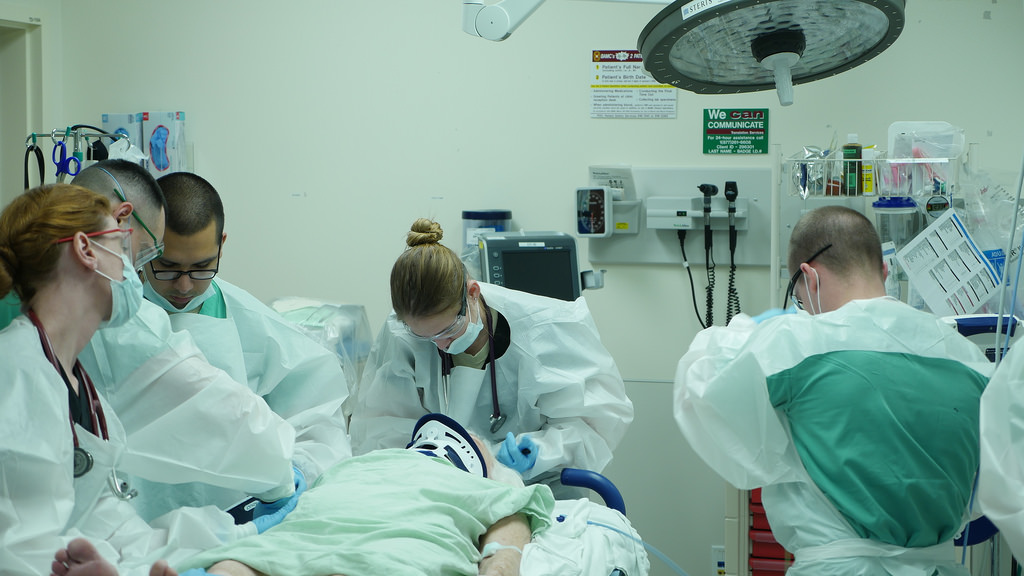
A typical shift in A&E: What is it like to be an EM trainee?
12:06pm
I arrive at work a few minutes late due to a cancelled train, but fortunately everyone is too busy to notice. The consultant asks if I can go straight to resus to perform a primary survey on a trauma patient. The trauma team has arrived consisting of a variety of anaesthetic and surgical colleagues. I am a bit nervous examining the patient in front of so many colleagues, but it is nice to know that they are there if needed. The trauma patient is a teenage girl who has been trampled on by a horse. She is cold, wet and terrified, I try my best to reassure her, but I don’t think I am as convincing as I want to be. A CT scan reveals she has a large liver laceration and so is transferred for surgery.
13:35pm
With the trauma patient now in the hands of the surgeons I get settled into seeing patients in majors. It is the usual collection of chest pains, abdominal pains and ‘collapse query causes’. I meet the most incredible elderly gentleman, despite his denial I suspect he has no recollection as to how he came to be on the floor, however, he can remember every detail of the the second world war! He flew Lancaster bombers, just like my grandfather, and still has the ‘RAF’ mustache to prove it!
19:40pm
I am shocked when I look at the time, I had been so wrapped up in seeing patients I didn’t even realise I was hungry! I take myself off to the break room for some well-earned dinner. At this time it is filled with nurses having a last cup of caffeine before starting their night shift. We exchange banter that would be considered offensive by most, but instead is the highest form of respect in A&E! The best thing about working in A&E is that you get another family – a really big, occasionally cranky, often hilarious, but always reliable family!
20:05pm
I’m entitled to a 40min break, but once the nurses leave me on my own in the break room I quickly get lonely and bored (a side effect of working in such a busy place). On heading back to work I pass an ambulance crew rushing into resus with a very sick looking man. I follow out of curiosity and then find myself getting stuck in doing my best to help. I perform an ABG that shows he is in very severe metabolic acidosis. He will need urgent dialysis, but first we need to stabilse him. Simultaneously we are putting in a central line, an arterial line and urinary catheter; starting infusions of noradrenaline and bicarbonate and performing a bedside cardiac echo. We eventually get control of his blood pressure and he is transferred to intensive care. It later transpired that he had taken an overdose of amitriptyline.
21:20
I feel exhausted after the last patient so I take myself over to minors to treat some less life-threatening problems. I meet a girl who fell off her high heels the night before whilst drunk and has a swollen ankle. It has taken her nearly 24hrs to come to A&E because she was too embarrassed. This makes a refreshing change! I cannot see any fractures on her X-ray so I discharge her with ankle sprain advice. The next patient has put his hand through a glass window sustaining a laceration to his forearm. With no glass visible on his X-ray and all of his nerves and tendons functioning, I get to work on stitching him up. I accidently cover him in water whilst cleaning his wound. I am totally mortified, but fortunately he laughs it off, it amazes me how resilient some patients can be!
22:10pm
I leave feeling I have done some good and tomorrow I get to do it all again!

